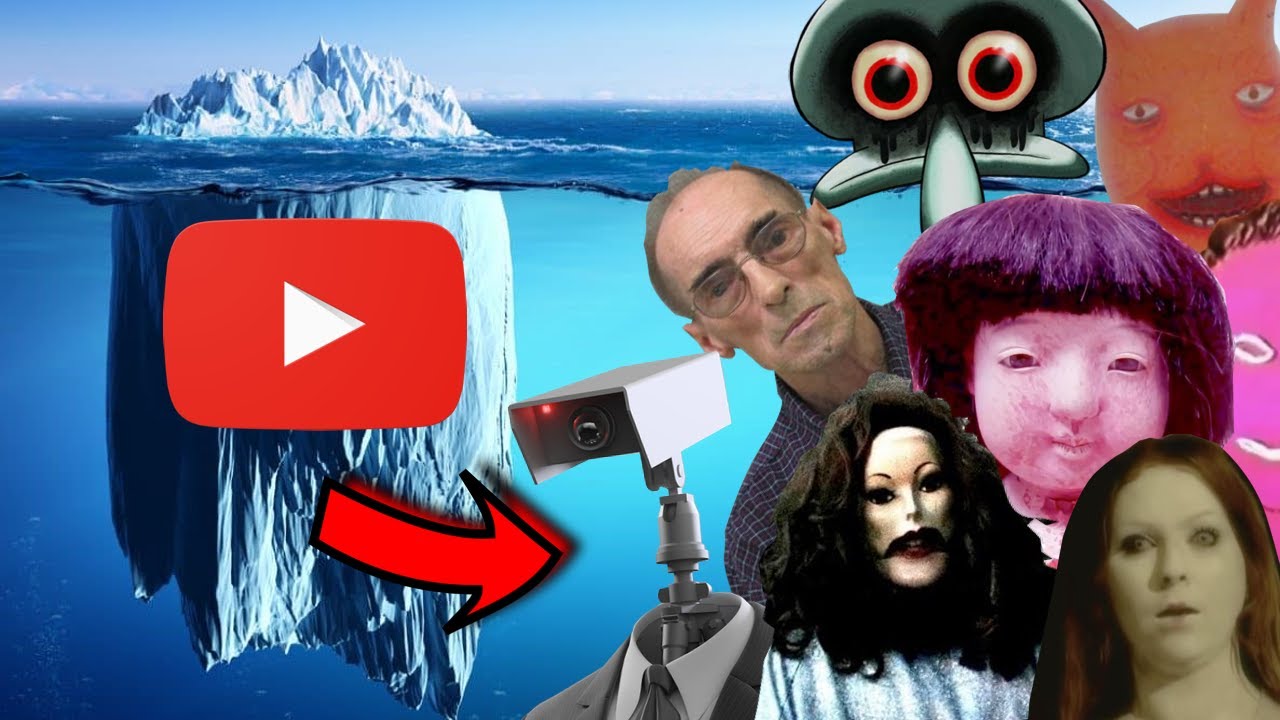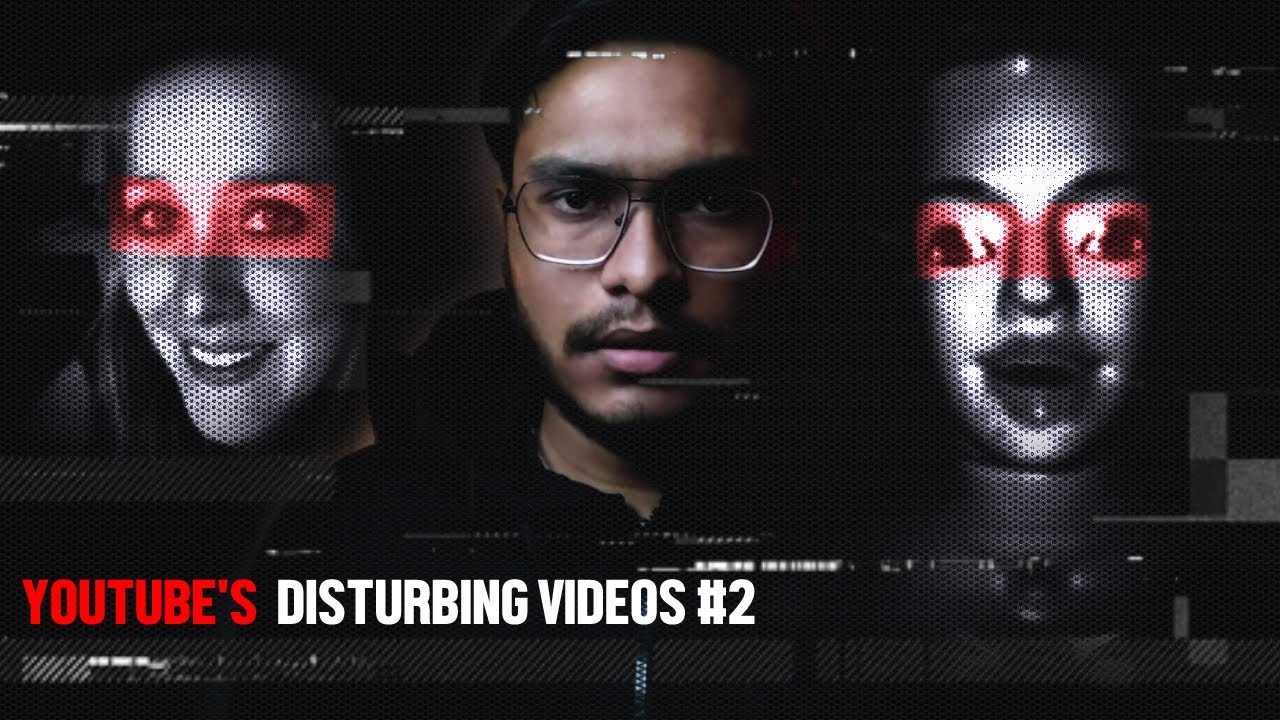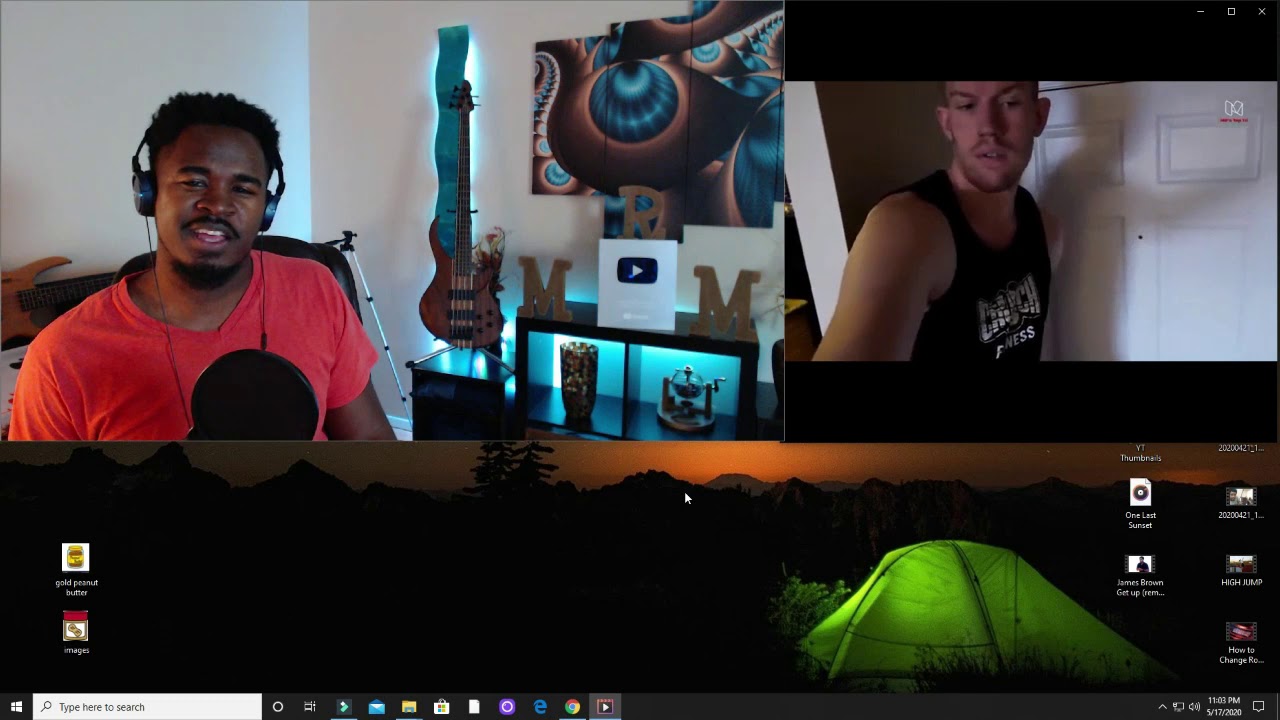Have you ever found yourself watching a series of videos on YouTube, only to be surprised by the bizarre and often disturbing content that pops up in your recommendations? You’re not alone. Many viewers wonder why these unsettling videos are suggested, sometimes veering far away from their interests. Understanding YouTube’s recommendation system can unravel this mystery and provide insight into the platform's intricate workings. Let’s dive in and explore how this system operates and why it sometimes seems to lead us down a dark rabbit hole.
What Are Recommendation Algorithms?

At its core, YouTube employs recommendation algorithms—an essential part of its functionality. These algorithms determine what videos appear on your homepage, in the sidebar, or autoplay next. While you might think of them as simple suggestion tools, they’re actually complex systems designed to keep viewers engaged for as long as possible. Let's break down how these algorithms function and why they sometimes promote unsettling content.
Recommendation algorithms use a series of *data points and user behaviors* to make tailored suggestions. Here’s how they generally work:
- User Interaction: Every time you like, dislike, share, or comment on a video, YouTube collects this data. This interaction history helps the platform understand your preferences.
- Watch Time: The algorithm prioritizes videos that keep viewers watching. If disturbing videos grab attention for longer—even if the viewer doesn’t particularly enjoy them—these may be pushed more frequently.
- Content Similarity: YouTube groups videos by themes and topics. If you've watched videos about a particular subject, the algorithm is likely to recommend content that’s related, even if it strays into troubling territory.
- User Demographics: Age, region, and viewing history influence recommendations. What’s disturbing for one demographic might be less so for another, allowing the algorithm to cater to diverse viewer bases.
While these factors help create a personalized experience, they can unintentionally lead to a fluctuating array of recommended content—even disturbing videos. Here are a few reasons why:
- Virality Over Quality: The algorithm often favors videos that are popular or trending, regardless of their nature. Disturbing videos can sometimes gain traction quickly, attracting viewers with sensational titles or thumbnails.
- Engagement Metrics: If users engage with disturbing content through comments, likes, or shares, the algorithm notices this spike in engagement and assumes there's an interest, leading to more of that content being surfaced.
- Content Misinformation: Not everything that looks appealing is positive. Misleading labels and thumbnails can lure viewers into darker content, further skewing recommendation paths.
Understanding recommendation algorithms reveals a lot about our viewing habits and the world of online content. It also raises important questions about the responsibility social media platforms hold in curating a safer viewing experience for users. Though the inner workings of these algorithms can be perplexing, recognizing their influence on what we see can empower us to take control of our media consumption.
Also Read This: Accessing YouTube Issues: Why You May Be Unable to Open the Platform
3. The Psychology Behind Disturbing Content

Have you ever found yourself watching a video that made your skin crawl, yet you couldn’t tear your eyes away? This is a common experience and it’s largely due to the psychology behind disturbing content. There’s something inherently fascinating about the macabre and unsettling aspects of human experience, and you’re definitely not alone in this.
Curiosity and the Forbidden: One of the key factors driving our interest in disturbing content is curiosity. Humans are naturally curious creatures; we want to understand the world around us, especially the parts that are hidden or taboo. Disturbing videos often tap into this curiosity, bringing us face-to-face with fear, horror, or the bizarre. It’s that weird sense of wanting to know what others might long to ignore.
Adrenaline and Arousal: Engaging with disturbing content can also trigger a physiological response in our bodies. Watching something frightening releases adrenaline, which can create a rush of excitement. This is akin to the thrill of riding a roller coaster; it’s a safe way to experience fear. For many, this arousal provided by the brain can feel invigorating, making the viewing of such content an enticing endeavor. The combination of fear and excitement can be addictive, keeping viewers coming back for more.
Empathy and Understanding Human Nature: Another psychological element at play is our innate desire to understand human behavior. Disturbing content often delves into the dark sides of humanity, such as violence, trauma, and violation of social norms. By watching these videos, viewers might feel a sense of empathy or even a desire to comprehend motivations behind such actions. This can lead to a deeper understanding of not just the content but also of human psychology itself.
So, next time you find yourself drawn to a particularly disturbing video, consider the underlying psychological currents at play. You’re engaging with something fundamental to human experience: the need to explore the unknown and understand the complexities of life, even when they get dark.
Also Read This: How Many Hours of Video Are Uploaded to YouTube Every Minute?
4. How User Behavior Influences Recommendations

YouTube, like many social platforms, leverages sophisticated algorithms to recommend videos. However, what many people may not realize is that these algorithms are heavily influenced by user behavior. In fact, you play a crucial role in the kinds of videos that are suggested to you, including those that might be more disturbing.
User Engagement: One of the primary factors that shape YouTube recommendations is engagement. This includes actions like watching, liking, commenting, and sharing videos. When a user interacts with disturbing content, it signals to the algorithm that such material is of interest. So, if you’ve recently clicked on, watched, or even rewatched a video that made you uncomfortable, YouTube takes note. It’s all about keeping users engaged, which can sometimes mean pushing the envelope.
Search History and Viewing Patterns: Your past viewing history also tells a story, and YouTube’s algorithms are adept at deciphering it. If you often search for or consume certain types of disturbing content, the platform will likely recommend more of the same. This can create a cycle of consumption, where users repeatedly find themselves drawn to and exposed to increasingly disturbing material. It’s fascinating and a tad unnerving how predictive these algorithms can be!
Recommended for You: The power of algorithms doesn’t stop at individual behaviors. The recommendations you receive are also influenced by the behavior of others. For instance, if many users who watch similar types of content also engage with disturbing videos, those will get pushed into your recommendations. YouTube continuously analyzes the broader trends in user behavior to determine what might catch your attention next.
To sum it up, the recommendations you see are not just random; they’re a reflection of your own interests as well as those of a larger community. The key takeaway? Being mindful of what you watch can significantly change your YouTube experience. If you’re feeling overwhelmed by the disturbing content, try diversifying what you engage with. You might just find your recommendations shifting in a more positive direction!
Also Read This: How to Turn Off Captions on YouTube TV: A Quick Accessibility Guide
5. The Role of Clickbait and Engagement Metrics
In the bustling world of YouTube, clickbait is often the star of the show. You may have noticed those eye-catching thumbnails, sensational titles, or the promise of shocking content that draws you in. But what exactly is the impact of clickbait on the videos recommended to us?
First, let's talk about engagement metrics. YouTube's recommendation system relies heavily on how users interact with videos. Metrics like views, likes, comments, and shares signal to YouTube what people find interesting or engaging. A video with a dramatic title or an unsettling image is likely to prompt a quick click. In many cases, if the viewer is intrigued (or even horrified), they'll watch the video all the way through, boosting its overall engagement stats.
Here’s a breakdown of some key engagement metrics:
- Watch Time: The total time users spend watching the video. Longer watch times indicate high viewer engagement.
- Click-Through Rate (CTR): The percentage of users who click on a video after seeing its thumbnail and title. High CTR signifies effective clickbait.
- Comments and Likes: The number of comments and likes can also indicate strong viewer interest, which YouTube’s algorithm notices.
So, here’s the kicker: when creators use clickbait effectively, they may boost their videos’ algorithms. However, this can lead to a problematic cycle. When viewers start clicking on disturbing or sensational content, they might unwittingly perpetuate the trend. YouTube notices that these types of videos are getting more engagement and consequently recommends more of that kind of content. It’s a self-reinforcing loop that can skew what users see on their feeds.
While clickbait can be entertaining and drive engagement, it’s essential to be mindful. When sensationalism overshadows substance, it can create a viewing environment where disturbing and inflammatory content proliferates, leaving viewers feeling unsettled or overwhelmed by the chaos in their recommendations.
Also Read This: Is YouTube TV a Better Option Than Cable
6. Addressing Content Diversity and Viewer Experience
Have you ever found yourself looking for a light-hearted video, only to be bombarded by a slew of disturbing content? This phenomenon calls for a closer examination of content diversity and how it impacts your overall viewer experience.
Content diversity is crucial in creating a balanced ecosystem on platforms like YouTube. When the recommendation algorithm primarily promotes clickbait and sensationalism, it can lead to a narrow range of content that skews towards the shocking and disturbing. This imbalance can affect how viewers navigate the platform, leading to feelings of unease or dissatisfaction.
But how can we enhance content diversity? Here are a few strategies:
- Curate Your Watch History: Regularly clear or refine your watch history to help the algorithm understand your preferences better. If you encounter videos that disturb you, don’t hesitate to mark them as "not interested."
- Engage with Diverse Content: Make a conscious effort to like, comment on, or subscribe to channels that produce positive, educational, or entertaining content. This signals the algorithm to show you more similar videos.
- Explore New Categories: Venture outside your usual viewing habits. YouTube has a wealth of categories, from cooking to science to travel. Discovering new interests can help diversify the content recommended to you.
The viewer experience on YouTube can feel tailored yet erratic, often providing a mixed bag of fulfilling finds and disturbing content. By actively participating in the shaping of your own algorithms and advocating for diverse content, you can reclaim your viewing experience and foster a healthier, more varied content landscape on the platform.
In this age of information overload, it's vital to strike a balance. With a bit of intentionality and awareness, you can navigate YouTube's complex recommendation system and enjoy a broader array of content that enriches, rather than disturbs, your viewing habits.
Also Read This: How to Change Family Manager on YouTube TV
7. Strategies for Improving Your YouTube Recommendations
Feeling overwhelmed by disturbing video recommendations on YouTube? You’re not alone! Luckily, there are effective strategies you can employ to enhance your YouTube experience and fine-tune those recommendations.
Here’s a handy checklist to help improve your recommendations:
- Engage with Content You Enjoy: The simplest way to refine your recommendations is to actively watch videos that genuinely interest you. Spend time on channels that resonate with your preferences, and don’t hesitate to like, comment, or subscribe. YouTube takes these engagements into account when suggesting new content.
- Utilize the "Not Interested" Feature: If you come across a video that doesn't appeal to you, click the three dots next to the title and select “Not interested.” This feedback signals to YouTube to steer clear of similar content in the future.
- Clear Your Watch History: Sometimes, past watching habits can haunt us! You can go into your YouTube settings and clear your watch history. This will remove previous influences and allow the algorithm to start fresh based on your current preferences.
- Regularly Update Your Subscriptions: Review your subscriptions every so often! Unsubscribe from channels that no longer align with your interests. This helps the algorithm suggest more relevant content by focusing on what you actually want to see.
- Dive into the Settings: Explore the “Privacy” settings within your YouTube account. You can make adjustments to how your history impacts recommendations and even pause your watch history temporarily if you want a break from the algorithm’s influence.
- Discover New Interests: If you're tired of the same genres, branch out! Look for new content categories that intrigue you. Engaging with different types of videos can lead to a richer variety in recommendations, steering you away from disturbing content.
- Provide Feedback on Recommendations: YouTube often asks for feedback on recommendations. Don’t shy away from providing feedback—be honest about what you like and dislike!
By actively managing your interactions on the platform and providing feedback on what you do and don't wish to see, you can carve out a more enjoyable and personalized video experience. It may take a little time, but with patience, you'll notice a significant shift in the content YouTube prioritizes for you.
8. Conclusion: Finding Balance in Video Recommendations
In the end, navigating YouTube's complex algorithm can feel like a daunting task, especially when the platform throws disturbing content in your direction. However, finding a balance in your recommendations is entirely possible with a little intention and effort.
The key takeaway here is that YouTube’s recommendation system is not set in stone. It evolves with your engagement patterns. By consciously interacting with the platform and focusing on the content that brings you joy, you can harness the power of the algorithm to serve your interests rather than overwhelm you with unwanted or distressing content.
Remember, it’s all about curation. Don’t hesitate to take control over what you consume. Think of your watch history as a diary of your interests—make sure it reflects what you truly want. And if you ever feel uncomfortable with a recommendation, use the tools available to you to guide YouTube in the direction you prefer.
In summary, whether you’re looking to cut back on disturbing videos, introduce new interests, or simply enjoy the platform more, employing these strategies can lead to a healthier, more balanced viewing experience. So go ahead, take charge of your YouTube journey, and enjoy all the wonderful content waiting for you—just a click away!
 admin
admin








